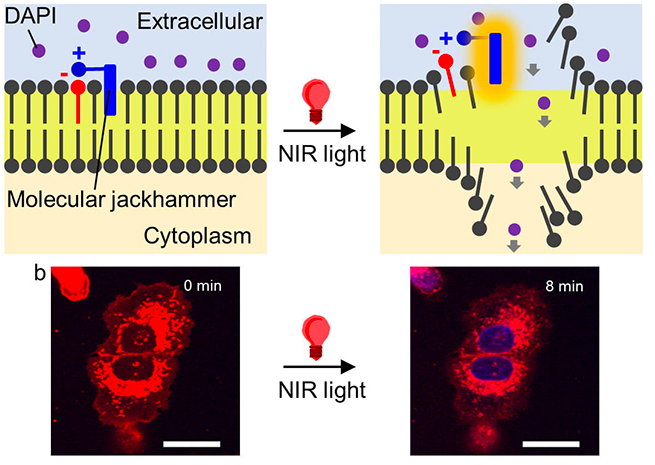A team of American scientists has discovered a new way of destroying cancer cells using what they call “molecular pneumatic hammers”.
Cancer research is not over, and so it should be for what it is considered to be leading cause of death in the developed world. If early detection is the key to cancer, and for some it is what separates life from death, advanced treatments against it are no less important. If treatments that seek to improve chemical therapies by “slicing” the DNA of cancer cells, inhibiting tumor growth while leaving healthy cells safe, continue to be the most interesting treatments in the short term, other research aims to literally “crush” them.
Aminocyanine molecules, used in bioimaging as synthetic dyes, are also used in low doses to detect tumors because they remain stable in water and adhere to the outside of cells. The novelty of the research from American universities, which we repeat, is that they were stimulated with near-infrared light so that they vibrate in sync, enough to they break down the membranes of cancer cells in the mechanism you can see in the following image:

“Pneumatic hammers” against cancer cells
Scientists say the new approach This is a remarkable improvement over other types of cancer-eliminating molecular machines based on Feringa-type motors. While the goal remains to break down problematic molecular structures, research is paving the way for that «a completely new generation of molecular machines, which we call molecular pneumatic hammers»they explain.
These new machines «They are more than a million times faster in their mechanical movement than the old Feringa-type engines and can be activated by near-infrared light instead of visible light.”. The use of near-infrared light is important because it allows scientists to penetrate deeper into the body. Bone and organ cancer could potentially be treated without the need for surgery to stop tumor growth.
In tests with cancer cells grown in the laboratory, the jackhammer method was obtained 99 percent success rate in killing cells. This approach was also tested on mice with melanoma tumors, and half of the animals were left cancer-free. It is the first time that a molecular plasmon has been used in this way to excite an entire molecule, and indeed to induce a mechanical action used to achieve a specific goal: in this case, to rupture the membranes of cancer cells.
The study was published in Nature Chemistry and shows “a different way to treat cancer using mechanical forces at the molecular scale”, they explain. No doubt promising against the leading cause of death in the developed world.














